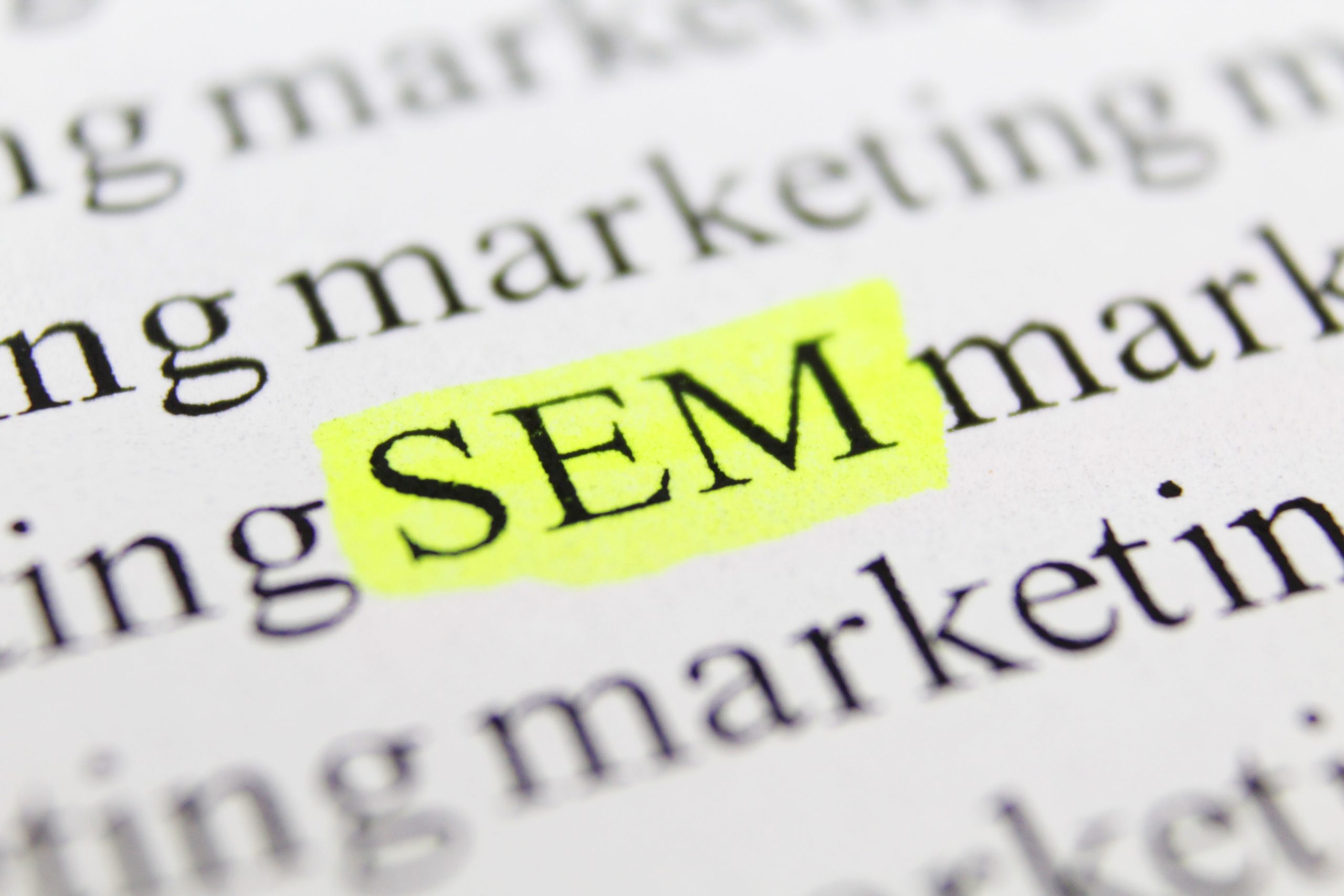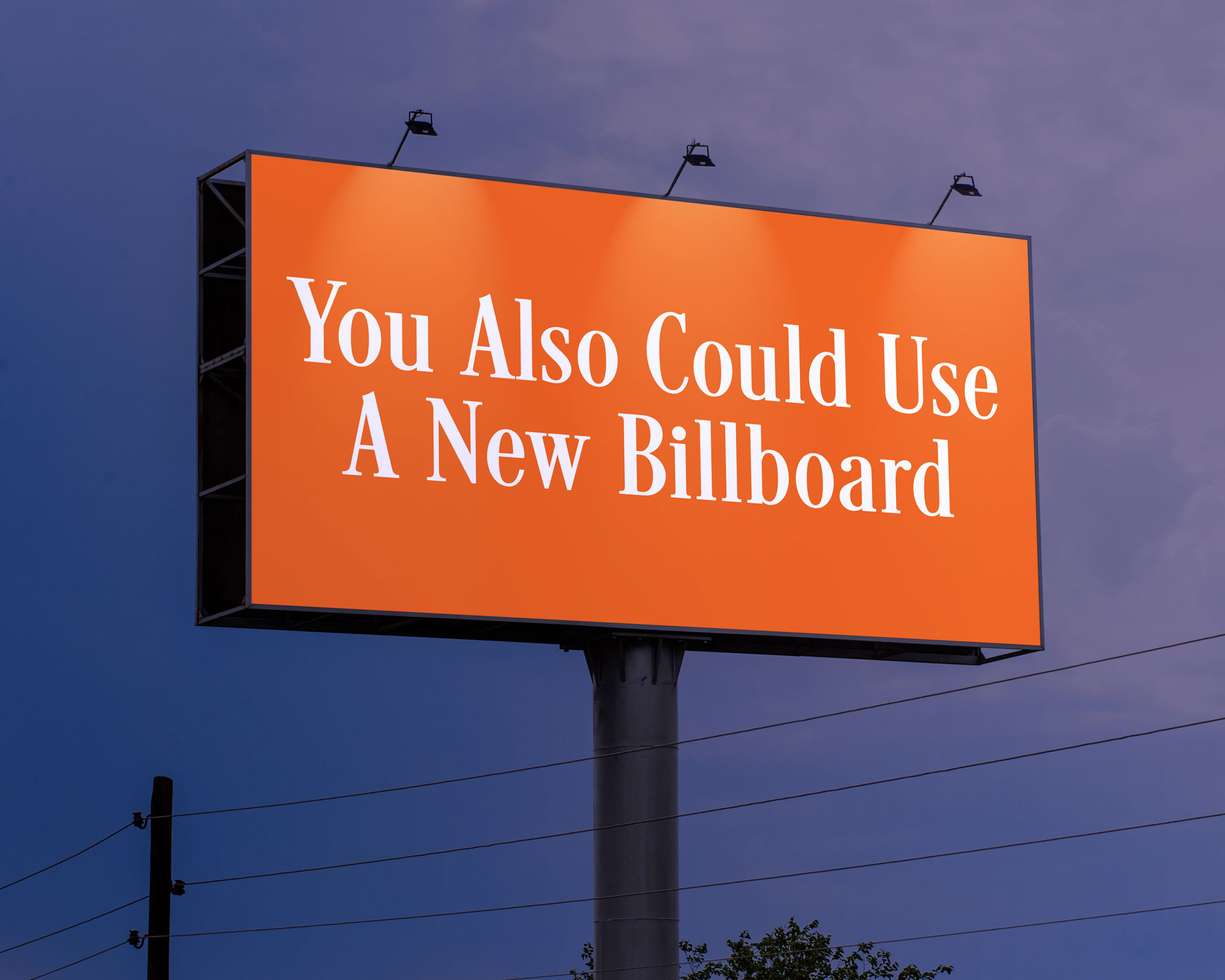How Billboard Marketing Can Help Grow Your Law Firm's Business: A Guide
How Billboard Marketing Can Help Grow Your Law Firm's Business: A Guide
If you’re looking to expand your law firm’s reach and visibility, investing in a billboard marketing campaign can be one of the best strategies to help grow your business. Billboard marketing has been a popular method for companies to promote their services for many years. It’s a great way to reach potential clients with an eye-catching message, and it’s an effective way to make a big impact in your area. With this guide, you can learn how to use billboard marketing to boost your law firm’s visibility, draw in more clients, and increase your profits. We’ll cover the basics of billboard marketing, the benefits it can offer your firm, and tips on creating an effective campaign. But first we spoke with Brantley Davis, President of Brantley Davis Ad Agency. His firm buys billboards across the country for personal injury law firms. We asked him the most important question of all about billboard marketing: Are billboards cost effective? Davis answered emphatically,
“Yes, billboards can absolutely, positively be cost effective. We see billboards pay off for our clients every day. But the locations have to be optimum, the message clear and no more than eight words should be featured on the billboard.”
Davis relayed a recent real life example of billboard marketing paying off. His firm launched a 15 board showing in a major western U.S market in November. The boards were strategically located in the law firm's primary market on major thoroughfares. Cases ticked up by 25% by the end of the month. And in December cases were up nearly 50%. Davis noted this particular firm was also running substantial SEM and TV advertising but those budgets didn’t change.
What is Billboard Marketing?
Billboard marketing, also called outdoor advertising, is the use of outdoor advertising to promote a product, service, or idea. Traditionally, outdoor advertising has been used to promote goods and services like hotels, radio stations, and concerts. In recent years, it’s become more common for businesses to use outdoor advertising to promote their products and services. This includes billboard marketing, which is one of the most popular ways to advertise. Billboard marketing has been an effective way for companies to promote their goods and services for decades. It can be a great way to advertise your law firm, and it’s an effective way to reach potential clients with a message that sticks.
Benefits of Billboard Marketing for Law Firms
Billboard marketing is a great way to promote your law firm and increase your visibility. A billboard gives you the opportunity to showcase your brand, services offered, and contact information in a single, impactful ad that your audience won’t be able to ignore. With the right campaign, you can reach customers in your area who are looking for legal help and encourage them to contact your firm. A billboard marketing campaign can help you attract more clients and grow your law firm’s profits. It can help you reach a wider audience that may not know your firm exists. When executed correctly, a billboard marketing campaign can help you boost brand awareness and increase visibility in your area. It can help you reach new customers and attract more clients, which can lead to more business for your law firm. This can help you grow your business and increase profits from your law firm.
Creating a Successful Billboard Campaign for Your Law Firm
To create a successful billboard marketing campaign, you’ll want to follow a few key steps. Before you launch your campaign, you may want to do some research on popular billboard advertisements in your area. Looking at what others are doing can give you some insight into what works and what doesn’t. You can also check out some best practices for creating an effective billboard ad. Once you’ve got a few different billboard ad ideas in mind, you’ll want to create a mockup of what your billboard might look like. This will give you an idea of how the billboard will appear, and it can help you decide which ad to go with. Once you’ve created your mockup, you can then find a billboard company to partner with. Once your campaign has launched, you’ll want to track your progress and make adjustments as needed. This can help you track how well your billboard is doing and make any necessary changes to boost performance.
Tips for Writing an Effective Billboard Ad
When writing your billboard ad, you’ll want to keep a few things in mind. Your billboard ad should be short and to the point, but it also needs to include all the information about your law firm and what you offer. You should include your law firm name, address, and contact information in the ad to increase visibility. You may also want to consider including a special offer or a call to action in your billboard ad. Your billboard ad should be eye-catching and memorable. You want to catch the attention of passersby and make your ad stand out from the rest. Since your billboard will be outdoors, it will be exposed to all kinds of weather, so you want to make sure the ad is easy to read even in bad weather.
Choosing the Right Billboard Design
When selecting the design for your billboard, you’ll want to keep a few things in mind. Your billboard design can have a big impact on how your billboard looks and how effective it is. You’ll want to make sure your billboard design matches your brand and is easy to read from a distance. Your billboard design should be large enough to be readable from a distance, but it shouldn’t be too big either. You’ll want to make sure your design can be read from the road, but it doesn’t take up too much space. You’ll also want to make sure your billboard design is high-quality. You want your billboard to look professional and eye-catching, and a shoddy design won’t help you reach your goals.
Where to Place Your Billboard Ad
When it comes to placing your billboard, you’ll want to consider a few things. You’ll want to find a location where your billboard will be visible to as many people as possible. A busy road with lots of traffic is a good place to start. You may also want to consider the cost of placing your billboard in different areas. You can use tools like Google Earth to find potential locations for your billboard. You can also reach out to local billboard companies to see if they offer advice on the best locations for billboards in your area.
Other Advertising Opportunities to Consider
If your law firm is looking to invest in billboard marketing, you may be wondering if it’s worth the investment. This type of advertising can be costly, so you’ll want to make sure it’s worth the investment. You can also consider investing in other types of outdoor advertising, such as bus advertisements, to help promote your law firm. These types of advertisements can be effective at reaching a wide audience and can be relatively inexpensive. They can also be a great way to supplement your billboard advertising.
Things to Avoid in a Billboard Ad
Avoid using too much text in your billboard ad by keeping it short and to the point. You don’t want your billboard ad to read like a novel. Instead, keep it simple and direct, and use as few words as possible. Avoid using any imagery in your billboard ad that may be considered offensive or distasteful. This may offend potential clients, and it may even get your billboard removed.
Conclusion
Billboard marketing is a popular form of advertising that can help you reach a wide audience and grow your law firm’s visibility. This type of advertising can help you attract more clients and boost brand awareness, and it can help turn potential clients into paying customers. To get the most out of your billboard advertising campaign, you’ll want to invest in a high-quality billboard design and place it in a busy area. You can also consider investing in other types of outdoor advertising, such as bus advertisements, to help promote your law firm. When you invest in outdoor advertising, you’re reaching a wide audience and increasing your law firm’s visibility. This can help you attract more clients, grow your business, and boost profits.
Making the Case for Law Firm Search Engine Marketing (SEM)
Making the Case for Law Firm Search Engine Marketing (SEM)
What’s the first thing you do when you’re considering a new purchase for your family? Odds are, you search online for the product or service you need. According to recent studies, 87% of all consumer searches for new products start online. And searching for a lawyer is no different. A huge percentage of searches for legal professionals starts online too. Brantley Davis knows. He runs Brantley Davis Ad Agency based in Washington, D.C. His firm handles Search Engine Marketing for personal injury law firms from coast to coast.
“At least 70% of car accident victims who don’t already know an attorney search for one online. And they’re hot prospects, ready to hire a lawyer today.” Davis continued, “If you’re running a law firm, you can’t afford to ignore Search Engine Marketing.”
According to Davis, Search Engine Marketing, also known as SEM, is one of the easiest, quickest ways to leverage hot prospects online. An ad campaign can be up and rolling in a week and turned off with a moment’s notice. Maybe best of all, the cost of entry is not prohibitive. Any size law firm can leverage search engine marketing with a small budget, unlike TV where the cost of entry in a major market can cost millions of dollars. And with SEM, small law firms can leverage larger firms' TV driven, online traffic by targeting keywords associated with the large law firm’s brand.
Unfortunately, thousands of law firms still ignore Search Engine Marketing to their detriment. Many lawyers are too busy practicing law or simply not willing to invest the time and energy to get up to speed on digital marketing. The easiest way to fast track SEM is to hire an ad agency already adept at digital marketing. But before doing that, it’s important to familiarize yourself with the basics of SEM. Here’s a quick primer.
A Primer on Search Engine Marketing for Law Firms
Search engine marketing (SEM) is becoming an increasingly popular way for law firms to promote their services and grow their businesses. With the right strategies in place, you can make sure that your law firm is seen in the right places, at the right times, and by the right people. It can also help you build trust and credibility, as well as give you an edge over the competition. Moreover, a solid SEM program can be a powerful tool to help grow your law firm's bottom line.
What is search engine marketing?
Search engine marketing (SEM) is the process of bringing targeted traffic to your website through paid advertisements on search engines. The ads include images, information, and a link to your website. You can use these ads to drive traffic to your website, increase brand awareness, and lead generation. SEM is a great strategy for law firms looking to establish their brand online, increase leads, and drive revenue.
Search engine marketing strategies
There are many different strategies that you can use to grow your law firm using SEM. You can use paid search ads, paid placement, and paid discovery to bring targeted traffic to your website. Paid search ads allow you to appear in natural search engine results at the top, middle, or bottom of the page.
Creating an SEM strategy
Before you start investing in SEM, you will need to create an SEM strategy. You can start by defining goals and objectives. What are your law firm's goals for next year? What are your law firm's objectives? What do you want to accomplish with your SEM strategy? When you have your goals and objectives in place, you can create an SEM strategy. Choose the best search engine for your law firm, the best keywords, and the best target audience. Create a budget and a timeline to help you stay on track. By creating an SEM strategy, you can make sure that you are investing your money in the right ways and reaching the right people at the right times with the right services.
Best practices for search engine marketing
There are many different best practices to grow your law firm through SEM.
- Make sure that you are targeting the right keywords. These are the words and phrases people are searching for online.
- Ask an SEO expert to audit your law firm's website to ensure it's optimized for search engines. Confirm the website is mobile friendly, has great content, and follows best SEO practices.
- Use social media to engage with people, answer their questions, and build trust and brand awareness.
- Develop an email marketing program to engage former clients and potential new ones.
By following these best practices, you can make sure that your law firm is seen in the right places, at the right times, and by the right people.
Measuring search engine marketing success
There are several ways to measure the success of your SEM strategy. Measure your traffic, leads, and conversions.
- Traffic – How much traffic is coming to your website? You can measure this by tracking your website traffic, including where that traffic is coming from.
- Leads – How many leads are coming in? You can track your leads and conversions to see how many leads you are getting and how many of those are becoming paying customers.
- Conversions – What percentage of your leads are turning into customers? You can track your conversions to see how many of your leads are actually buying your products or services.
By measuring your traffic, leads, and conversions, you can see how successful your SEM strategy is.
Tips for successful search engine marketing
There are many tips that you can follow to make sure that your SEM strategy is successful. Create a solid plan and strategy. Know what you are doing and why you are doing it. Diversify your marketing efforts and do not rely too much on one source of traffic. Test, iterate, and make adjustments along the way if needed. Measure your results, adjust your strategy based on those results, and keep moving forward.
The best search engine marketing platforms
There are many different platforms that you can use for search engine marketing, but these three are the best for law firms. The first one is Google Ads. This is the most popular and widely used platform for search engine marketing. The second one is Facebook Ads. This is a great platform for B2C law firms. The third one is LinkedIn Ads. This is a great platform for B2B law firms. There are also other platforms available, including Bing Ads, Twitter Ads, and Instagram Ads. These are also good platforms that you can use for search engine marketing.
Why Law Firms Need to Invest in Search Engine Optimization (SEO) for Successful Marketing
Why Law Firms Need to Invest in Search Engine Optimization (SEO) for Successful Marketing
Quick, if you were injured in a car accident and needed a lawyer, what’s the first thing you’d do? If you’re like the majority of Americans, you’d search online for an attorney. According to recent studies, 87% of all consumer searches for products start online. That’s a compelling statistic, especially considering car accident victims searching online are hot prospects, ready to hire a lawyer today. It would be law firm marketing malpractice to ignore the prodigious flow of online accident lawyer searches.
80% of Consumers Skip Paid Search Ads
Consumers are skeptical of advertising. 80% of Americans searching online skip paid ads and proceed directly to organic results. That’s why it’s imperative personal injury law firms develop a long term, strategic approach to Search Engine Optimization (SEO). A quick SEO audit by an experienced law firm marketing agency can give you a sense for your law firm’s current rankings, and what can be done to improve them.
Brantley Davis runs a law firm marketing ad agency, Brantley Davis Ad Agency, in Washington D.C. His agency markets law firms from New York to Seattle and is on the front lines of Search Engine Marketing.
“It’s common sense. If 80% of car accident victims skip paid lawyer ads and go directly to organic results, your law firm can’t afford to ignore Search Engine Optimization,” Davis continued, “Many law firms have saturated television but have been slow to embrace Search Engine Marketing. That’s left them vulnerable to smaller competitors who have leapt ahead using digital marketing.”
What Is Search Engine Optimization (SEO)?
Search engine optimization (SEO) is the process of increasing the visibility of a website on a search engine result page (SERP), which is the list of website links shown in response to a user’s search query. SEO is not a “silver bullet” that can instantly boost a website’s ranking. Rather, it’s a long-term strategy that requires consistent effort over time to see results. There are a number of factors that determine where a website ranks in search engine results. These factors include the number of sites linking to your website, the text on your website’s pages, your website’s architecture, your website’s authority, and more.
Benefits of Investing in SEO for Law Firms
- Reach more potential clients – By investing in a solid SEO strategy, law firms can reach more potential clients online, leading to more business. By increasing your website’s visibility on SERPs, you can reach a larger audience, including people who are searching for legal help but aren’t necessarily ready to hire yet. SEO can help you to connect with these potential clients and guide them through the decision-making process.
- Improve brand awareness – Brand awareness is an essential element of law firms’ success. Brand awareness can help law firms to secure new clients, increase retention rates, and increase referrals. Investing in SEO can help brand awareness by increasing your law firm’s online presence and making your website more visible to potential clients.
- Improve lead generation – SEO can help law firms generate leads by driving more traffic to websites and boosting conversion rates. By increasing website traffic, law firms can collect more leads, contact information, and email addresses, which can be used to guide clients through the decision-making process.
The Cost of SEO
The cost of executing a solid SEO program can range anywhere from $5,500 to $20,000 per month but compare proposals closely to avoid overpaying.
“There’s only so much you can do for SEO each month,” cautioned Brantley Davis. “For example, generating too many backlinks in a month will actually hurt your law firm’s Google rankings. Play the long game and don’t overpay.”
SEO proposals should include a site architecture audit, 300-500 backlinks per month with solid Domain Authority, 8,000-16,000 words per month in blog content, and special attention to local Google maps and reviews.
SEO Tactics for Law Firms
- Focus on long-tail keywords – Long-tail keywords are highly specific phrases that are more likely to convert than broad, short-tail keywords. Long-tail keywords are also easier for law firms to rank for, making them a valuable SEO tactic. By focusing on long-tail keywords, law firms can create more targeted content that is likely to convert.
- Create useful and high-quality content – To rank higher on SERPs, law firms need to engage their potential clients. The best way to do this is by creating high-quality content on their website and connecting with potential clients through that content.
How to Create an Effective SEO Strategy
There are a few key components to creating an effective SEO strategy for law firms:
- Defining goals – Before starting your SEO strategy, it’s important to define your goals. What are you trying to achieve with SEO? What do you want to get out of it? Defining goals for your SEO strategy can help you to stay focused and make sure that you’re putting your time and effort into the right things.
- Competitive analysis – Once you’ve defined your goals, it’s time to conduct a competitive analysis. A competitive analysis can help you understand your competition, the keywords they’re ranking for, and the types of content they’re publishing.
- Creating an editorial calendar – An editorial calendar can help you to stay on track with your SEO strategy. An editorial calendar outlines all of the content that you’ll be publishing, when you’ll be publishing it, and how it relates to your overall SEO strategy.
Keyword Research for Law Firms
Keyword research is the process of researching and discovering which search terms people are using to find solutions to their problems. By conducting keyword research, law firms can discover which keywords they should be targeting, and how they can rank higher for them. There are a few different ways to research keywords and discover which ones are best to target.
- Using a keyword tool – There are a number of keyword tools that can help law firms to conduct keyword research. By using a keyword tool, you can enter a few different keywords, and the tool will pull data and offer suggestions for additional keywords to target.
- Conducting a manual keyword analysis – Although keyword research tools can be helpful, it’s also important to conduct a manual keyword analysis to make sure that you’re targeting the right keywords. To conduct a manual keyword analysis, you can review websites that are ranking for your desired keywords to discover what their content is about.
Link Building for Law Firms
When it comes to SEO, link building is the process of gaining external links to your website from other websites. External links are important because they can help to increase your website’s authority and improve your SEO. External links also help to improve brand awareness and generate more leads. For law firms, there are a few different ways to build links to their website, including:
- Building links through content
- Creating valuable, helpful, and high-quality content can not only help you to rank higher on SERPs, but it can also help you to earn links from other websites. By creating content about topics that other websites are also linking to, you can reach out to those websites and ask them to link to your content.
- Building links through guest posts – Guest posts are articles that are published on another website. By writing guest posts for relevant websites, you can earn links back to your website. This is a great way to build links through content and can help to increase your brand awareness.
How to Measure SEO Success
There are a few different metrics that can help you to measure your success with SEO.
- Traffic – The number of people visiting your website is a good metric to track and can help you to measure your success with SEO. The more people visiting your website, the more likely they are to convert.
- Conversion rate – The number of people visiting your website who choose to complete a specific action, like filling out a form or making a purchase, is another good metric to track. The higher your conversion rate, the more successful your SEO efforts are.
SEO Tools for Law Firms
- SEMrush – SEMrush is a free online tool that can help you to track your SEO efforts. With SEMrush, you can track your website’s traffic, keywords, and more.
- Google Analytics – Google Analytics is a free tool that can help you to better understand your website’s traffic. With Google Analytics, you can track your website’s traffic, discover which pages are the most successful, and more.
- HubSpot – HubSpot is a marketing software that can help you to track your SEO efforts. HubSpot can help you to track your website’s traffic, discover which pages are the most successful, and more.
- SEMrush – SEMrush is a free online tool that can help you to track your SEO efforts. With SEMrush, you can track your website’s traffic, keywords, and more.
Brantley Davis Says "TV Here To Stay" In Washington Business Journal
Recently Brantley Davis, president of Brantley Davis Ad Agency, was featured in the Washington Business Journal's piece "Greater Washington ad executives talk TV trends."See his thoughts below about the future of media and what's in and out.
Greater Washington ad executives talk TV trends.
The number of eyes glued to network television and the number of ears tuned to local radio stations are both shrinking, and have been for some time. It’s clear where those eyes and ears are going, as increasingly more young adults prefer streaming and podcasts to traditional outlets. The majority of seniors, meanwhile, still tune in to the evening TV news, so while the changes are obvious, it’s no clear-cut conclusion that TV and radio are dying.
Who’s keeping closest tabs on these trends? Look no further than ad agencies. It’s their job to know who’s paying attention to which media so they can make sure their ads are targeted to the right audience.
Bearing that in mind, we reached out to some of the region’s advertising executives to learn more about what they’re seeing on this front, and what their strategies are concerning television and radio these days.
What’s changed – and what hasn’t
It’s tempting to observe these audience changes and reach the conclusion that network TV and radio are phasing out or no longer important — but ad execs would tell you: Not so fast. They both still have a crucial place in media, it’s just more complicated.
“Twenty years ago, media planning was simpler. For mass reach, we bought TV and targeted specific demographics based on TV programming. And if we wanted to target specific audiences more surgically, we chose from various radio formats,” said Brantley Davis, president of Brantley Davis Ad Agency. “But today, media has fractured. As a result, a much higher level of sophistication is required to plan media, not only because of the wide variety of options, but also due to legitimate questions about the efficacy of newer media.”
“TV still offers efficient mass reach and delivers proven results for advertisers,” he said. “In the midterm elections, more money was spent on broadcast TV than any other media, again.”
Looking at certain media types as “older” misses the point, as Sarah Spatafora, media director for LMO pointed out.
“It really boils down to where our target audiences are consuming media now and what media types are showing growth among those demographics — and less about how those media types are perceived as older or more analog,” Spatafora said. “Inherently, we know that if we’re strategizing for a campaign aimed to reach older consumers or consumers in more rural communities where broadcast television and radio consumption is high, including TV and radio in that campaign will be crucial,” she said.
Where we’re headed
“Commercial TV, like radio, will always have a place in the mix. They just no longer are the only ingredients of the mix,” said Matt Smith, CEO of SmithGifford. “Mass media is what’s dead. Having one place to reach everyone is dead.”
Alicia Gehring, vice president of media for White64, said the average adult still spends about six hours a day watching TV — the difference is they’re not only watching TV, but also looking at digital devices at the same time. Attention is just more fractured.
And that, experts acknowledge, makes the job more a challenge.
“We cut the research in multiple ways in order to understand audiences and create a target audience universe,” said Jacqui Hannigan, head of media for RP3 Agency. “We ask: What is our creative message, what is this format and/or programming that might work for our client’s message, and what geography and mindset is our target audience in? Every media channel is a consideration.”
She still sees network TV and traditional radio as the “tried and tested” ways to reach an audience outside of digital media, especially during big events like the Super Bowl, or the local and national morning shows that people of all ages still watch every day.
“We now look to partner both linear stations with their digital counterparts,” she said. “Radio also provides opportunity for local tie-ins and amplifications with their on-air talent and promotions, heard on either or both linear and digital platforms.”
As for the future, it seems likely we’ll see some consolidation of all these subscription-based video and audio outlets, as networks and streaming services look to centralize their access to consumers “and ultimately take a bigger piece of the advertisers’ media budgets,” Spatafora said.
But for all too many, human nature isn’t likely to change.
“People will continue to turn to their top three to five favorite channels to consume media, video or audio,” Gehring said. “But they will have many to choose from, and we will need to consider that full universe to reach them.”
“This is without a doubt the most exciting time to be in the communication business. It's full of innovation and creativity. No rules are set. I know this makes many uncomfortable. We are in the business of now." — Matt Smith, CEO, SmithGifford
Take Your Law Firm Marketing to a Higher Level, Literally
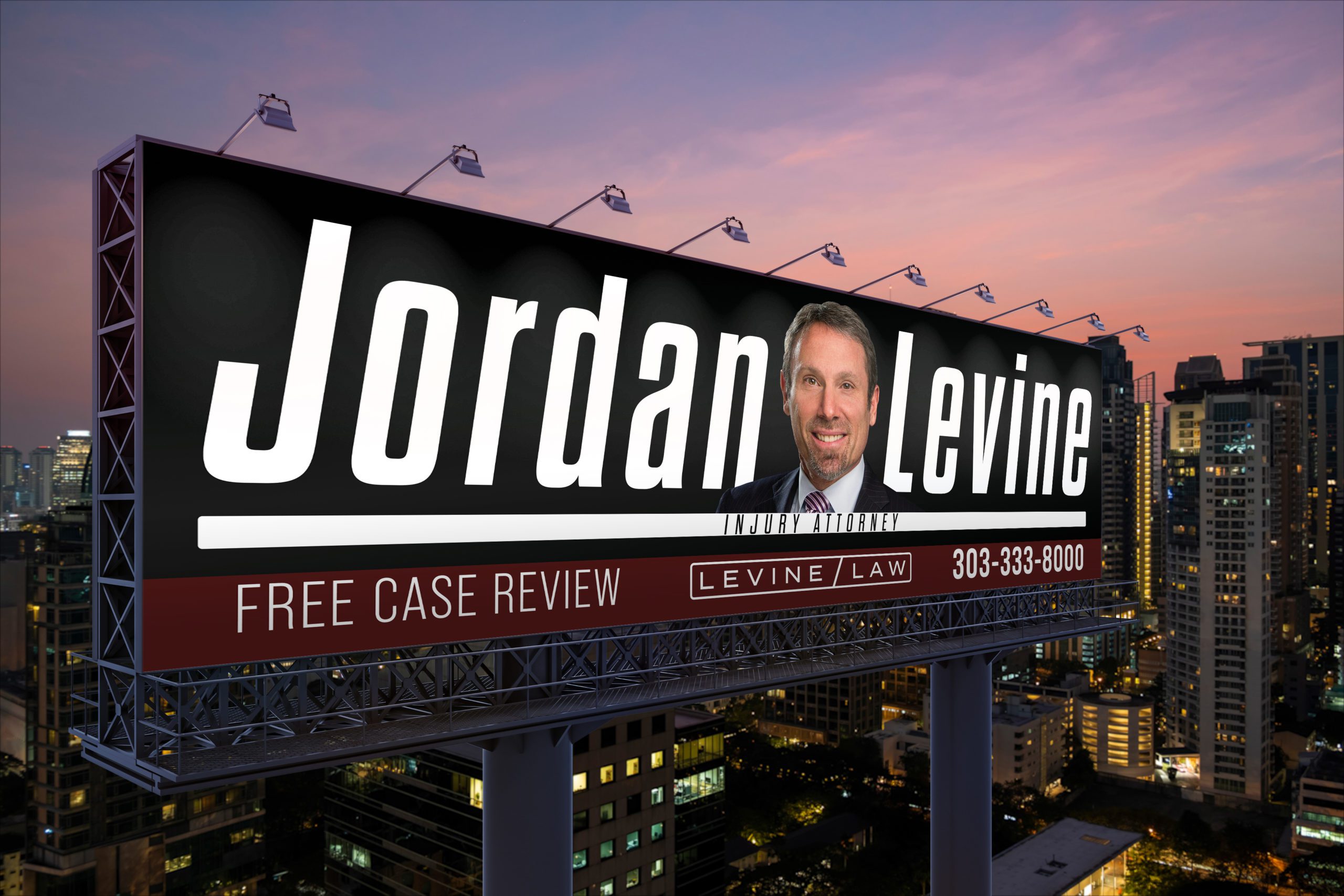 Since Covid eased, ad agencies have been taking their marketing thinking to a higher level, literally. Around the world, creatives have rediscovered the lost art of billboard advertising. And the result is more clever billboards than ever that grab consumers attention like never before. But why the renaissance?
Since Covid eased, ad agencies have been taking their marketing thinking to a higher level, literally. Around the world, creatives have rediscovered the lost art of billboard advertising. And the result is more clever billboards than ever that grab consumers attention like never before. But why the renaissance?
Covid slammed the brakes on American roadways like no other event in history. As Covid took hold across the country in April 2020, road traffic decreased by 45% according to the American Automobile Association (AAA.)
That decreased automobile traffic driving by billboards by nearly half too. And weekly car traffic is the metric outdoor companies use to market their billboards. The impact on the advertising industry in general was devastating but the billboard industry was hit especially hard.
We, at Brantley Davis Ad Agency (BDAA), know. BDAA negotiates media across the U.S., including outdoor. We saw the fallout firsthand as billboard rates plummeted and many boards sat empty.
“With road traffic cut in half, we were able to negotiate billboard rates down to one third their usual cost. Initially that was alluring but we had concerns about efficacy given the enormous decline in cars on the road. However, the lower rates allowed us to add many more billboards to our campaigns, vastly increasing reach and overall impact. That paid off for our law firm clients, especially those that agreed to long term deals, locking in lower rates even as traffic increased.” Stated, BDAA CEO, Brantley Davis.
Now billboard advertising is back. According to the Out of Home Advertising Association of America (OAAA) revenue was up 38% in 3Q 2021. And 88% of the top 100 out of home advertisers in the U.S. have increased their spending on billboards. 51% have more than doubled their spending on outdoor. That’s leading to low billboard inventory in many markets and higher advertising rates.
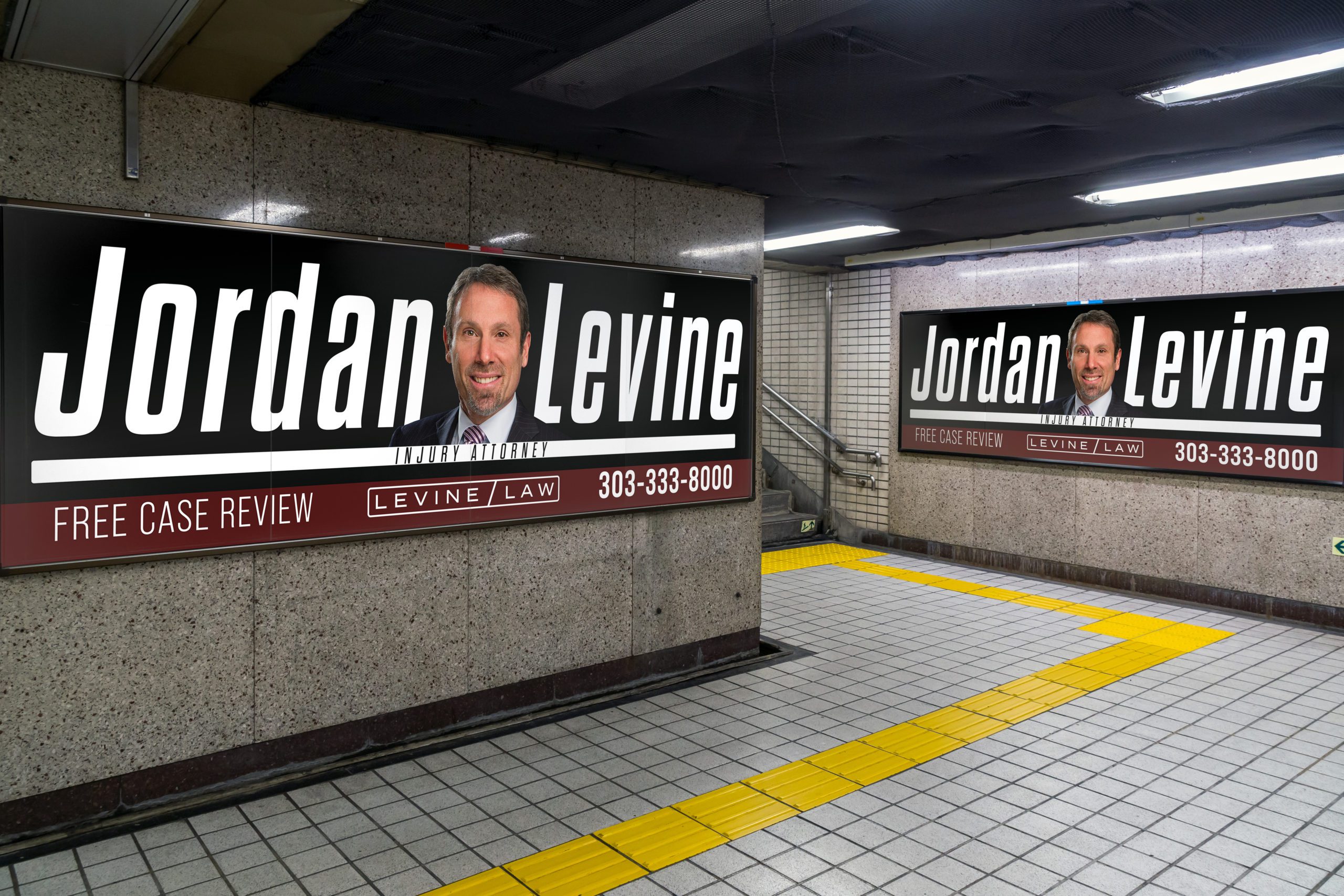
One segment of advertisers driving the billboard buying frenzy is personal injury lawyers. From coast to coast, roadways are papered with law firms promoting their services on billboards. Denver Colorado has been especially hard hit. Jordan Levine runs one of the top personal injury law firms in Denver and he’s never seen the competition for billboards this fierce.
“Since the pandemic eased and Denver started driving again, law firms have increased their spending across all advertising categories. But the spike in competition for billboards is unprecedented. We’re paying double what we used to pay for billboards and still losing them in bidding wars.”
Levine is a client of BDAA and credits their ads with making him a household name in Denver.
“Everywhere I go in Denver, people recognize me as the billboard guy thanks to Brantley. It’s great from a marketing perspective but anonymity is certainly a thing of the past.”
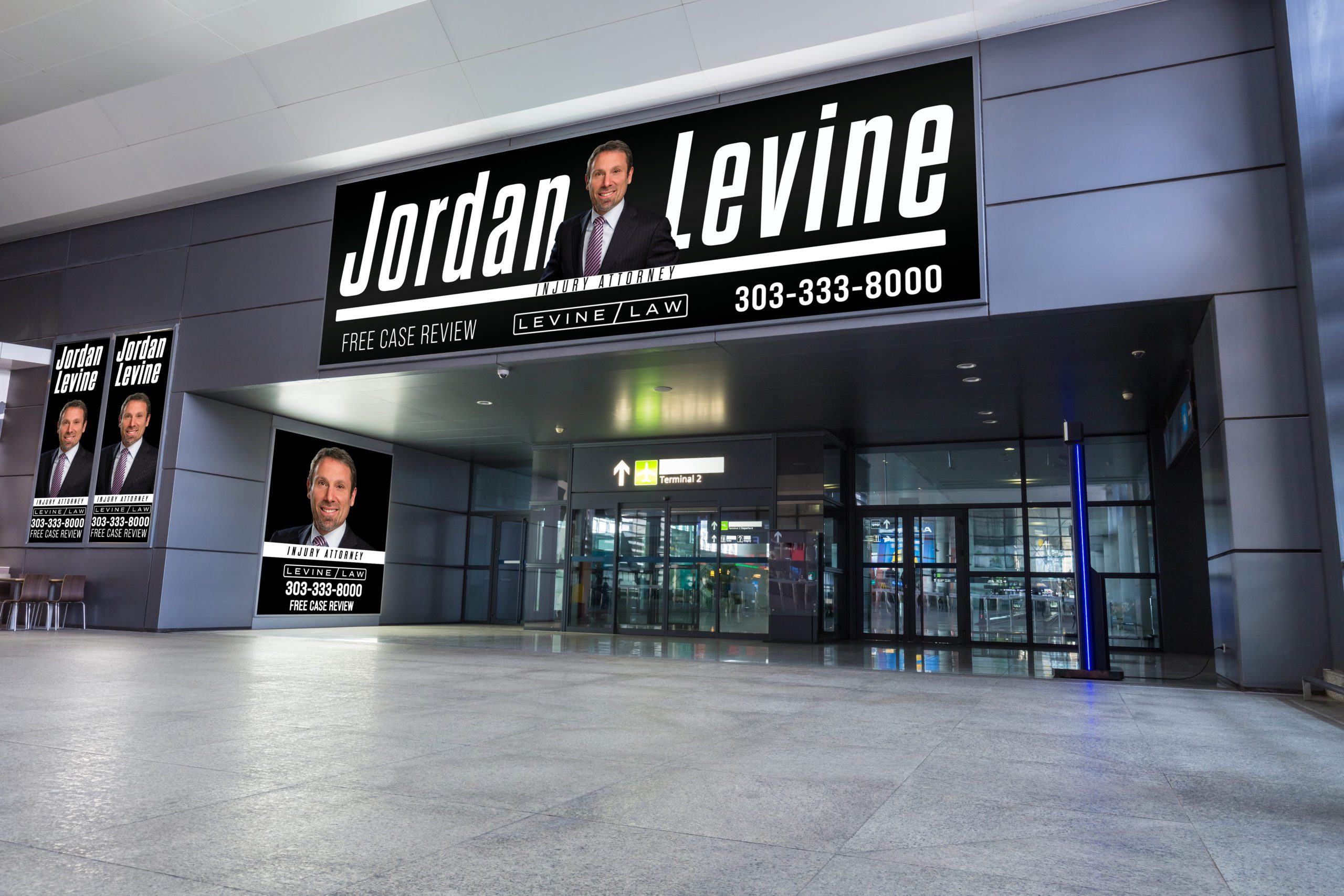
With the high demand for billboards and increased ad spending, one would think the effectiveness of billboards would not be in question. However, there are still those out there who have concerns about the efficacy of billboard advertising. To allay any apprehension, OAAA conducted two surveys in 2020, in the midst of the pandemic. Here’s what they found:
- 45% more consumers are noticing OOH marketing materials than before the COVID-19 outbreak.
- 69% of viewers of a digital street level ad immediately took an action related to that ad: looking it up in a search engine, visiting a brick-and-mortar store, or purchasing a product, for instance.
- 65% of viewers visited a brick-and-mortar store or restaurant after seeing an OOH ad that provided directions to the nearest store location.
Survey results and top advertisers renewed commitment to outdoor advertising make a compelling case for billboards. But Brantley Davis cautions advertisers to follow the rules for successful billboard advertising:
- LOCATION: Choose billboards in high traffic locations where they will be seen.
- RIDE THE BOARDS: Ride the boards and personally view each board to check for distance from the road, time to read the board, obstructions not shown in the outdoor company’s photos.
- 15 SHOWING MINIMUM: Buying several very high impact boards can garner attention. But many markets don’t offer those boards or they’re already sold out. As a rule, you should buy a minimum of 15 boards per showing in a market.
- NEGOTIATE: Sure, the environment is highly competitive right now but in markets where multiple billboard companies are present, pit the company’s against each other in negotiations to get the best deal. And note, billboard companies will substantially lower rates for long term deals. We recommend a minimum of three months.
- MAKE IT MEMORABLE: Make the billboard memorable. Don’t be afraid to take a chance. A sense of humor is even apropo as long as that’s in line with your brand. Make someone smile and the ensuing chemical reaction in the viewer's brain will keep you top of mind for a long time.
- PART OF A CAMPAIGN: Most billboard ads run in conjunction with a multimedia advertising campaign. For example, law firms typically run TV, CTV, PPC and even Radio in conjunction with their outdoor advertising. The billboards serve to extend reach and maintain brand awareness when consumers are out of home away from other forms of paid media.
- HIRE AN AD AGENCY:
- Many advertisers cram so many words on a billboard they fail to communicate anything. Remember 8 words or less.
- Emphasize the spokesperson’s face, not their body. Make the face big so people recognize them.
- Don’t be boring unless you have bought so many billboards in the market, your frequency becomes the message.
- Don’t let the billboard company lay out your billboard. Hire an ad agency to help you with concepts and designs. If you select the right partner, they will produce much more impactful boards than you or the billboard company could ever create.
Legal Marketing: Attorney Ad Says Personal Injury Law IS About Money. Money to Rebuild Lives.
There are 273 million vehicles on America’s roads today. Each year about 5 million are involved in accidents and 1.8 million Americans are injured. Much to the insurance industry’s chagrin, a significant percentage of accident victims hire personal injury lawyers to represent their interests. And for good reason. According to the Insurance Research Council’s own internal data, car accident victims who hire lawyers average 3.5 times more financial restitution for their accident claims than those who don’t hire attorneys. The data below from the 1999 IRC study illustrates the difference in payouts for specific injuries with and without an attorney. The difference in compensation for catastrophic injuries could be substantially more with attorney representation as insurance companies have a much greater financial incentive to contest larger claims and payouts.

**Compensation for injuries have increased substantially since this study was conducted in 1999, so dollar figures in this table would be much higher today due to inflation.
That’s why the insurance industry has disparaged personal injury lawyers for decades, attempting to discredit them by making patently spurious claims like “lawyers are all about money.” Some of the malicious barbs have been repeated so long they’ve become bromides. The irony of course is insurance companies make billion dollar profits, not personal injury attorneys. Further, insurance company’s interests revolve around generating higher profits for their Wall Street shareholders, while injury attorneys represent the interests of ordinary people without the means to stand up to wealthy corporate conglomerates.
High dollar litigation between law firms and insurance companies has become more prevalent lately as pandemic restrictions eased, more people took to the roads and U.S. motor vehicle fatalities increased. U.S. traffic fatalities reached a 16-year high in 2021, with nearly 43,000 deaths. And the trend is continuing. According to the National Highway Traffic Administration, the first three months of 2022 were the deadliest in more than two decades. Over 9,500 people were killed. The rise in traffic deaths is attributed to more people on the roads driving at high speeds, under the influence and without seatbelts. Less police officers on the road is also adding to the problem according to the Governor’s Highway Safety Association.
With billions of dollars in accident victim compensation at stake, Brantley Davis Ad Agency has launched a TV ad that turns the old “lawyers are all about money” bromide on its head, pointing out that the money lawyers obtain for accident victims helps pay for surgery, physical therapy, long term lifecare and to take care of families who lost a loved one due to a negligent driver. While the money insurance companies save by not paying accident claims ends up in the pockets of wealthy Wall Street stock holders. The ad starts out with an attorney proclaiming, “Some say personal injury law is all about the money. Well they’re right.” The commercial goes on to provide examples of how the money is used to help accident victims recover from damage caused by someone else's carelessness.
Brantley Davis, President of Brantley Davis Ad Agency, commented “sure, many personal injury lawyers make a great living but that’s not why they became lawyers. They chose the legal profession to help people rebuild their lives. And that takes money.” Davis continued, “Is personal injury law about the money? Damn right it is.”
Legal Marketing: Are Regular People or Actors More Effective in TV Ads? Ask a Newborn Baby
What can newborn babies tell Ivy League educated grown ups about marketing? Apparently a lot. According to numerous studies, newborn babies hold salient clues to the question that’s been debated by marketers for decades: Should advertisers use real people or actors in TV ads?
Over the last twenty years, more advertisers have been using real people in their commercials. And there are substantial upsides. Real people are cheaper than actors. They won’t appear in ads for competitors. Theoretically, real people are more authentic. But in practice, are real people more compelling than actors? Before we solicit the opinion of newborn babies, let’s examine a famous ad campaign that employed real people and delivered big results.
By all accounts, Dove’s Real Beauty ad campaign launched in 2004 was a homerun. Going against mainstream beauty standards, Dove featured average looking women in their ads alongside provocative headlines. The ads were so different they stood out and created positive social impact, endearing the Dove brand to women and men alike. Sales of Dove products jumped from $2.5 to $4 billion in the first ten years of the campaign. It was an overwhelming success, spawning a plethora of real people ads for the next decade.
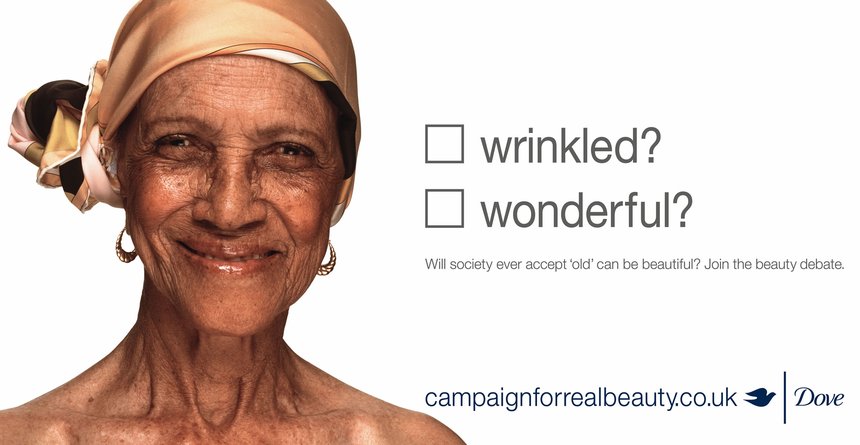
A Dove advertisement from the legendary “Real Beauty” Campaign.
But was Dove’s “real people” success the rule or exception? Brantley Davis, President of Brantley Davis Ad Agency, has been marketing major law firms, automotive groups and political campaigns for thirty years and regularly uses real people and actors in TV ads. He contends Dove’s success was the product of breakthrough thinking by creatives, not necessarily using real people. “When the Dove campaign launched, very few major brands were using real people in ads. Dove’s approach was refreshing. It made the homogenous sea of ads featuring picture perfect supermodels seem superficial and phony. And helped women appreciate themselves for who they were, blemishes and all.”
Brantley Davis Ad Agency, produces 300-500 TV ads each year. And according to Davis, commercials featuring actors perform significantly better than real people ads. “We’ve pulled real people ad campaigns off the air because they weren’t working. And in each instance, as soon as we put ads featuring attractive actors back on the air, our metrics skyrocketed.”
Davis isn’t alone in this view. Real people ads have received their fair share of criticism and delivered lackluster results for many brands. The Chevy campaign featuring real people guffawing over Chevy cars and JD Power awards was panned by many as inauthentic. The ads even inspired parody videos. Maybe that’s a positive for Chevy? As P.T. Barnum famously said, “just make sure you spell the name right.”
While anecdotal, these examples beg the question, why don’t real people ads work as well as commercials featuring actors? Davis contends the answer can be traced back to basic human instinct. “Countless scientific studies have demonstrated that humans pay attention to more attractive people versus less attractive. And as a rule, telegenic actors are more attractive than real people. Even babies less than six weeks old prefer more symmetrical, aesthetically pleasing faces. It’s nature driving our basic instinct to favor those more likely to ensure the survival of the human species.”
According to the research, Davis is right. Human infants prefer to look at physically attractive human faces when they are paired with physically less attractive human faces (Langlois, Roggman, Casey, Ritter, Rieser-Danner & Jenkins, 1987). Infant preference for attractive faces has been observed for a range of human faces, including Caucasian and African American adult female faces, adult male faces, and infant faces (Langlois, Ritter, Roggman & Vaughn, 1991; Samuels & Ewy, 1985; Van Duuren, Kendell-Scott & Stark, 2003).
Davis also brought up the psychological theory of homophily many marketers use as a rationale for using real people in ads. Homophily is the theory that people like people who are similar to them. But Davis points out that there are far more factors at play in selling products than choosing friends. Is a woman in the market for expensive perfume swayed more by an aspirational image or one more mundane? Are people with more symmetrical faces more influential? Ask a newborn baby.
Political Ads to Preempt Law Firm Advertisers As Election Day Nears
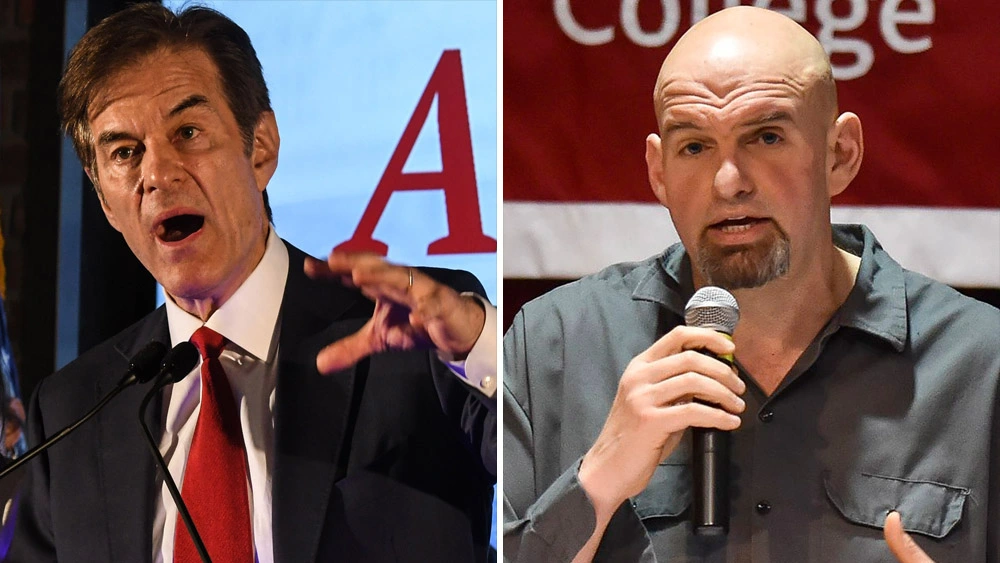
Pennsylvania Senate candidates Mehmet Oz and John Fetterman. Oz has demanded 5 debates with Fetterman who is recovering from a stroke.
Here we go again. Political Advertising for midterm elections is projected to break records. Political campaigns spent $4 billion in 2018 on advertising, $9 billion in 2020 and this year a report by AdImpact projects spending to reach $9.7 billion. That’s great for TV stations and social media companies bottom lines but what about other advertisers like personal injury law firms? Remember, law firm advertisers kept advertising through Covid while other advertisers cut budgets or stopped advertising altogether.
Brantley Davis, President of Brantley Davis Ad Agency remembers. His firm is in the unique position of placing millions of advertising dollars on TV stations for personal injury law firms and political advertisers.
“TV stations’ revenue was eviscerated by advertiser cancellations throughout Covid but the one category that held strong and helped keep stations afloat was law firms. This is TV stations' chance to repay law firm advertisers’ loyalty by protecting their schedules throughout the election cycle.”
The warning bells started ringing for advertising agencies when local TV stations raised rates for third quarter 2022, a period when stations typically drop rates and offer loads of no charge bonus spots due to loose inventory. The culprits were mainly News oriented TV stations with higher ratings that were already feeling bullish due to early inventory pressure in their local News programming. Political campaigns and issue advocacy advertisers typically buy predominantly News programming where a large swath of active voters are viewing.
The implications for personal injury law firm’s in the 4th quarter of 2022 are huge. In addition to 4Q being one of the most expensive times of year to advertise, there’s already a TV frequency arms race underway between warring personal injury law firms across America. Local attorneys are grappling for TV audience’s attention by increasing the number of ads they buy, pressuring TV station rates and inventory. Exacerbating the situation further are big spending, new to market law firm advertisers like John Morgan of the mammoth Morgan & Morgan. Morgan seems to be launching ads in new TV markets monthly in many cases outspending local firms decisively. Add billions in political advertising dollars to the equation and TV inventory is going to be the tightest it’s been in years. That’s going to result in law firm advertisers incurring unprecedented spot preemptions, especially in September, October leading up to election day. Unfortunately, the inventory pressure will continue through December as TV stations attempt to make good gobs of preempted spots. It all adds up to bad news for law firm advertisers' bottom line.
Some areas of the country will be harder hit than others like Georgia, Pennsylvania, Arizona, Nevada, and Wisconsin, where the top five Senate races are taking place. All five states have already seen advertising spending in excess of $100 million respectively. House and Senate races are expected to account for about $4.3 billion in advertising while Governor’s races will account for $2.3 billion.
And while a larger share of the spend is going to Streaming this election cycle, the majority of ad dollars will still be captured by broadcast TV. Here’s projected ad spend by media: Broadcast TV $5 billion, Cable TV $1.5 billion, Streaming $1.5 billion, Digital $1.5 billion and Radio $250 million.
Brantley Davis had several suggestions for legal marketers as elections approach:
- Assess Your Market: Identify 2022 elections in your TV market and assess projected ad spend. Your local TV stations with News programming will have already done this and happily share their analysis with you.
- Solidify Your Preemption/Makegood Policy: Decide whether you’ll allow stations to make preempted ads good or you’d rather take credits. Telling the stations no makegoods will send a message that your spots better run or the station gets no money, no second chance. But you also lose a chance at an upgrade.
- Take the Week Off Leading Up to November 8th: In markets where inventory pressure is particularly acute, we often advise clients to take the week before election day off. Sometimes we even take two weeks off. There are a couple reasons. First, political ads are strident, nasty and the tone often turns TV viewers off to all advertising. Second, running half a schedule will not allow the necessary ad frequency to break through the clutter and reach consumers.
- Monitor Schedules: As the election nears, ask stations for prelogs to make sure you see your spots scheduled. Prelogs are no guarantee your spots will run but you’ll at least be aware in advance if your entire schedule has been blown out.
- Talk to Your Reps and Their Managers Now: Start positioning with stations now. Tell them you expect all spots to run as usual since you advertise all year on the station, not just around election time. Tell them in no uncertain terms, their future share of TV buys could be affected if they preempt your law firm’s ads.
- Be Prepared to Shift Spend: Be prepared to move quickly if your schedule does get blown out. Many advertisers shift to a much heavier digital presence during political cycles.
Brantley Davis Ad Agency Named One of Washington DC’s Top Agencies
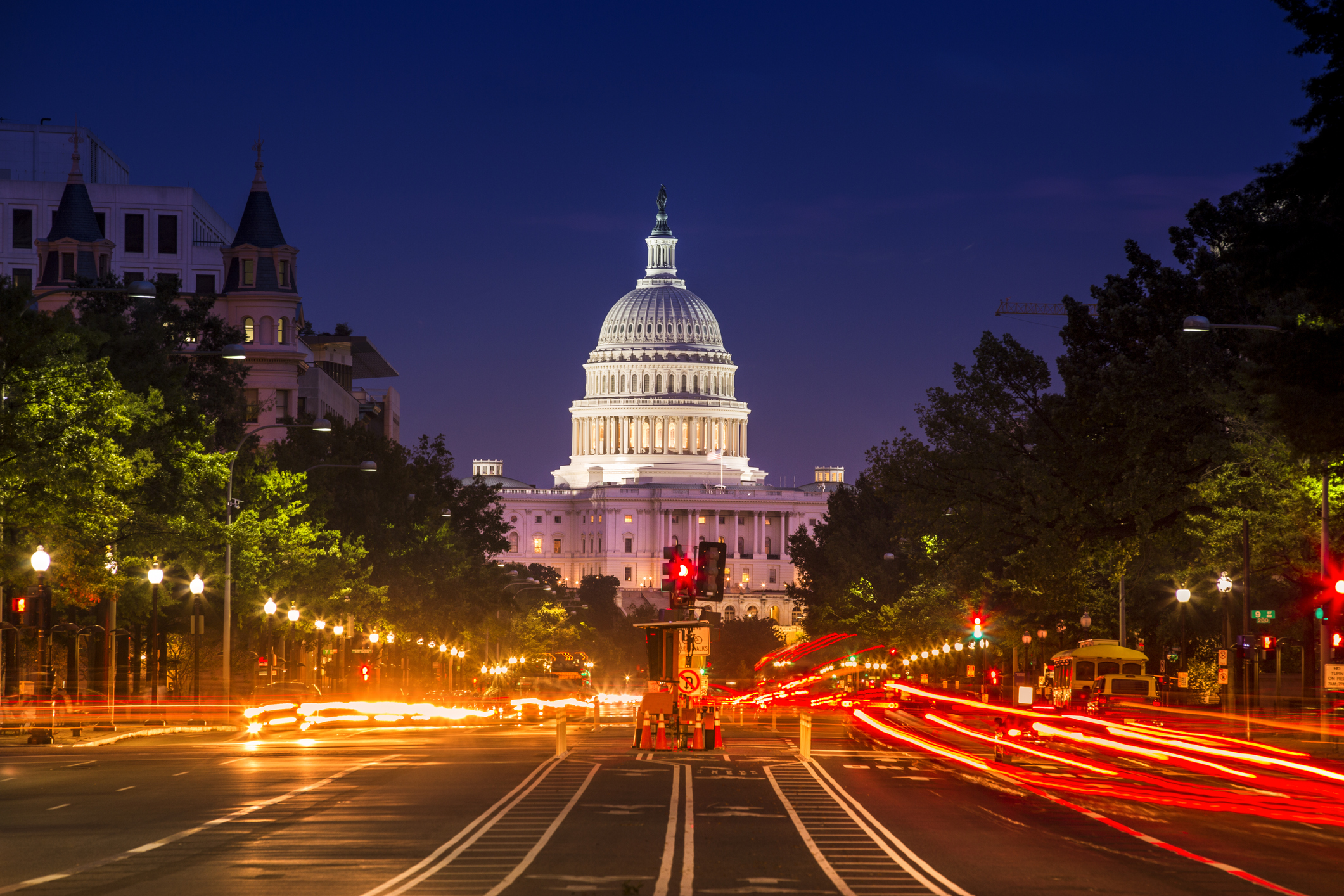
Raising the Bar on Law Firm Marketing Pays Off in Year One
The Washington Business Journal has named Brantley Davis Ad Agency (BDAA) one of Washington DC’s top advertising agencies . Over the last thirty years, the Washington Business Journal has compiled a list of Washington’s top companies. The “Book of Lists,” as it is known in DC’s business community, has become a benchmark for success in the Washington market and is frequently used as a reference by members of the press, marketing directors and investors.
We’re thrilled to make the list our first year in business. This accolade is a testament to the high quality of our staff’s gorgeous work product as well as our amazing law firm clients who stuck with us as we launched our new advertising agency.
Each year, the Washington Business Journal compiles lists of Washington’s top private companies, associations and philanthropists. The criteria for making the list is typically based on the annual revenue a company generates within the Washington DC MSA. For the last decade, the lists have been compiled by a team of analysts headed up by journalist and veteran Data Editor Carolyn Proctor.
To make “the list” the first year in business isn’t easy for a number of reasons. A company must have been open long enough over the last twelve months to generate adequate revenue to qualify. And many companies like BDAA didn’t open until late 2021. Additionally, a new business must already have clients on the roster providing enough revenue to make the list. Many newly established companies are still trying to sign clients in their first year.
Congratulations to all the amazing companies that made the list and thanks to Washington Business Journal for the recognition. We certainly hope to make this a tradition!
Law Firm Marketing: How to Audition Actors for TV Ads and Avoid Surprises!
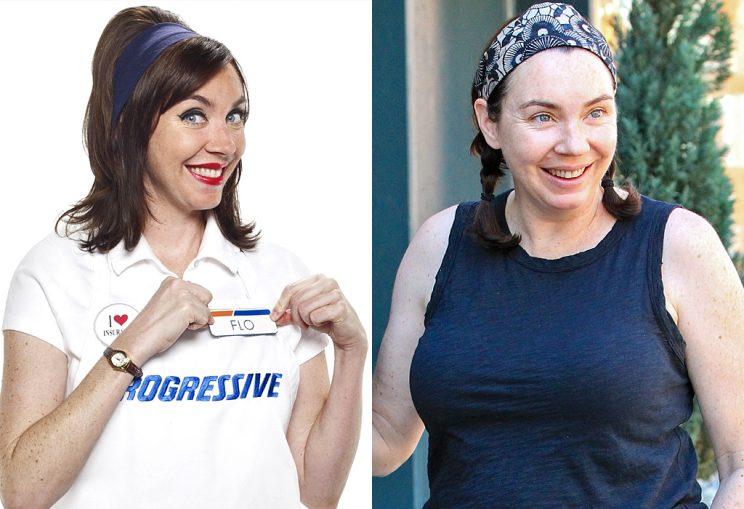
As an ad agency that produces 500+ TV spots each year, we’ve heard plenty of horror stories about actors showing up on set the day of the TV shoot looking nothing like their headshots or TV reels. That miscalculation could jeopardize the entire production, cost tens of thousands of dollars and even jobs. That’s why we put together this guide to successful actor casting.
Follow these helpful hints and you’ll be a superstar producer in no time:
- Think Through Demographics, Tone of Script: Make certain casting demographics have been well considered and defined: gender, age, etc. Which actor is going to hold the most appeal for your target audience? Does the script call for a dramatic delivery or comedic? Those are key questions that will drive successful casting.
- Hire a Talent Agency: Talent agencies are paid a small fee to find actors but it’s money well spent. A good agency will have lists of talented actors on hand and be able to orchestrate auditions in a few hours. If you’re having difficulty finding a talent agency, ask a local production house for some reputable names. And one local talent agency should suffice as that will prevent arguments about which agency reps talent. Truth is, most actors use multiple talent agencies. If you’re in need of a national high end actor, that's another league. Email us for suggestions bd@jbdadagency.com
- What to Expect to Pay An Actor: Fees for local talent will vary by market and are negotiable. Expect to pay each actor $500-$800 for a one day shoot, covering ads running in one major TV market for one year. However, high end actors performing for national brands can cost big money: Stephanie Courtney who plays “Flo” for Progressive Auto Insurance earns $1 million a year; Jared Fogle, Subway’s former spokesman made $15 million before being sent to prison; Paul Marcarelli, Verizon's former “Can you hear me now?” guy was paid $10 million over ten years; Jonathan Goldsmith, “the Most Interesting Man in the World” made millions appearing in Dos Equis commercials.
- Headshots/Reels/Experience: Your talent agency will provide you with headshots and TV reels of actors corresponding to your demographic descriptions. Once you have those, review for appropriate look, voice and acting talent. But don’t stop there! This is where things can veer off track big time. The next step is probably the most important in this list!
- Conduct Iphone Auditions Using Real Scripts: It’s imperative that you conduct Iphone auditions. Over the years, I’ve been amazed at how an actor's appearance can change dramatically in a short period of time. Provide the talent agency with a :30 script that you’re going to produce and ask for Iphone auditions. Using a real script will provide you with a solid feel for an actor’s natural inflection and :30 will allow plenty of time to gauge their acting chops. And Iphone auditions will ensure the actor’s appearance is consistent with headshots and reels, saving you from any shoot day surprises.
- Choose Backups: We typically shoot 8-12 actors in a day. All of our talent shows up because they’re pros we’ve worked with for years. But If you haven’t worked with the talent before, it’s possible some will cancel. That’s why it’s important to have backups ready to roll at least a couple weeks prior to the day of production.
For more casting tips, visit our website. And best of luck with your TV shoot! We’ll see you at the ADDYs!
